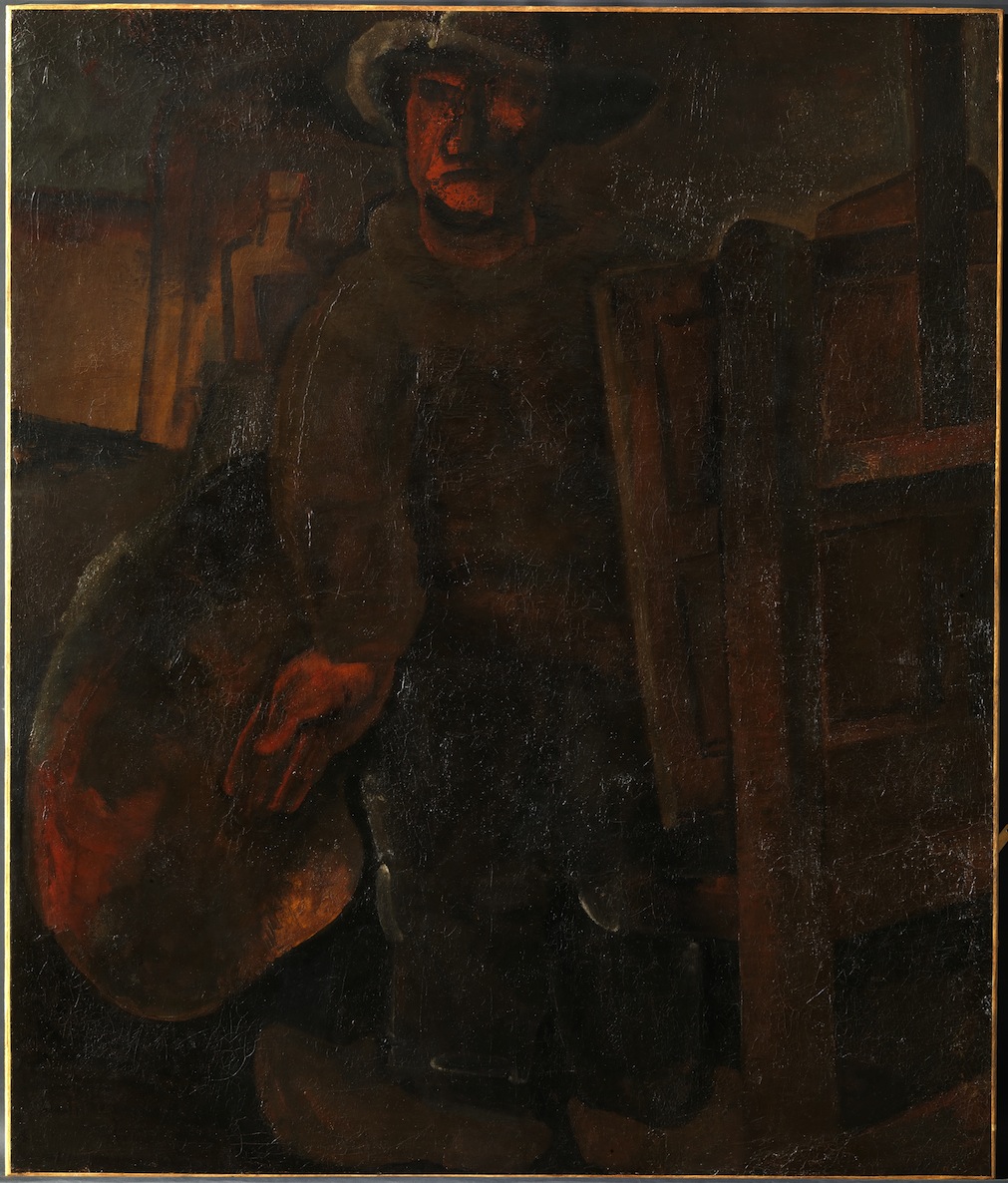
Although I looked up at the expressionist artists in 1936, I was already able to see with my own eyes how quickly their work was materially lost. I am reminded of the many cracks of Philibert Cockx’s over-applied crunch, the browns of Permeke, etc.
René Smits in Flanders Magazine, 1983
The painting that was restored at KIK-IRPA is a self-portrait of the painter Constant Permeke, which he painted in 1928. Eight years later he resumed large parts of the work, repainting entire zones. He worked further on the composition and the forms, resuming the face, the shoes and much of the background. The figure with hat stands behind an easel, wears clogs and he holds a brush and a palette in his right hand. The tone of the work is very dark, the artist almost exclusively used brown earth pigments here. Only the face, the right hand and the palette have a brighter, red color
A painter must stand with his feet in the shit.
C. Permeke
Over the years, the painting has already undergone some restoration treatments; including a consolidation and duplication using wax resin. The most important problem of the work was the flaking of the pasty paint layer. The paint is highly crackled over the entire surface and showed large cracks, shrinkage cracks and ripple. In addition, the whole was covered by a lot of dirt and a thick layer of dust.
The work came into the Institute because the paint layer had dangerous back-ups. A preliminary investigation was carried out into the most suitable fixative that was tested through small tests. The paint was fixed and surface dirt was removed. The gaps were filled in again with a suitable filling and retouched.
Parallel to the treatment, a few analyzes were performed to try to find out the problem of exfoliation. Within the framework of the project, 12 other paintings by Permeke from the Mu.ZEE collection with the same problem were additionally investigated.
Permeke painted spontaneously and very quickly. The paint was applied thick and very sloppy, possibly directly from the tubes either with a palette knife, wide brushes or with his thumbs and fingers. He felt intimately connected to the ground and therefore used many brown and dark colors.
In this way he referred to the earthly, popular and ordinary life of the simple person, such as the farmer and the fisherman. On the other hand, earth pigments were cheap and easily available.
The fact that Permeke knew little about painting techniques does not detract from the greatness of his artistry.
René Smits in Flanders Magazine, 1983
Permeke was an expressive painter who adapted his method and technique in many different ways. He painted over and renamed much of his work. This has the logical consequence that his layers of paint are made up of many different layers, at “The Self-Portrait” at least thirteen.
During his life, he was already known for his unique choice of materials and techniques. This already produced degradation phenomena, of which he may have been aware.
The works of the painter generally have a very dark view. An important question here is: Has Permeke intentionally darkened his paintings or is this the result of natural aging or the painter’s painting technique?
The research gave us some striking technical aspects as a result. It allows us to better understand Permeke’s painting technique and offers more clarity about layer construction, so that restoration treatments can be better tailored to the needs of the work in the future.
From the exhibition “Permeke in layers”, 25.04.2015 – 16.08.2015, Mu.Zee Ostend.
Both the research and the restoration of the Self-portrait were carried out by the Royal Institute for the Art Heritage (KIK-IRPA) in Brussels.